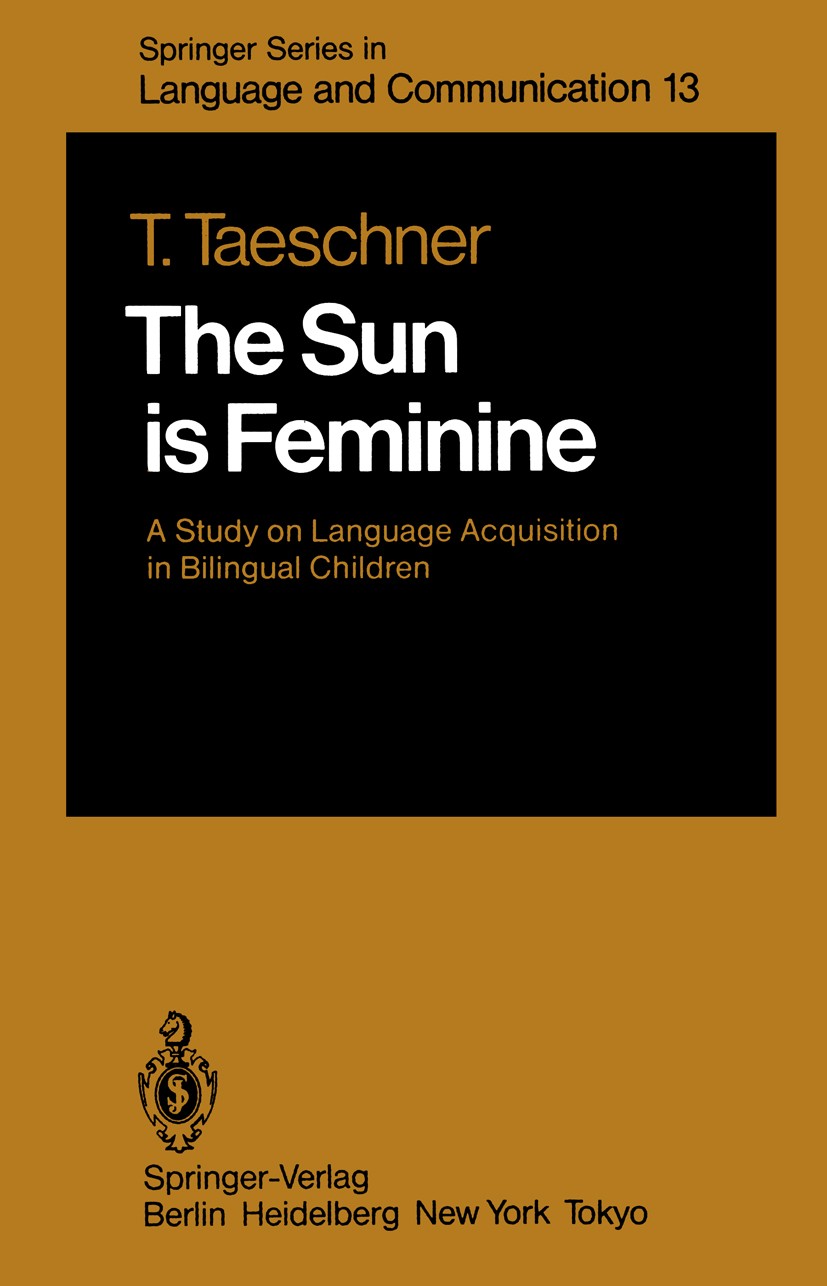| 書目名稱 | The Sun is Feminine | | 副標(biāo)題 | A Study on Language | | 編輯 | Traute Taeschner | | 視頻video | http://file.papertrans.cn/921/920794/920794.mp4 | | 叢書名稱 | Springer Series in Language and Communication | | 圖書封面 |  | | 描述 | Lisa is 4 years and 5 months old and Giulia 3 years and 4 months. One morning, the girls‘ father is taking them to nursery school. L: ... e bravissima, ha riscaldato l‘a(chǎn)uto. E‘ bravissima, vera? In praising the sun for having warmed up the car, Lisa has referred to it in the feminine gender, as in the German die Sonne. Her father corrects her by using the masculine gender. F: E‘ bravissimo. E‘ if sale. L: E‘ un maschietto, if sale? (Is the sun a little boy?) F: E‘maschife. (It‘s masculine.) G [determined]: E‘ una femmina! (No, it‘s a girl!) F: Forse in tedesco. (Perhaps it is in German.) is left disoriented, speechless. Giulia This book is devoted to language acquisition in children who have been expos- ed to two languages since birth. It has often been said that the study of simultaneous bilingualism is the "most fertile ground" for the formulation of general theories on language acquisition processes, and indeed, most of the studies on early bilingualism aim in this direction. But in a sense this book serves the reverse purpose. Using the results of psycholinguistic research as a basis, I have sought to understand the peculiarities of the process of language organization in the c | | 出版日期 | Book 1983 | | 關(guān)鍵詞 | German; Spracherwerb; Sun; Zweisprachigkeit; bilingual; language acquisition; learning; monolingual | | 版次 | 1 | | doi | https://doi.org/10.1007/978-3-642-48329-5 | | isbn_softcover | 978-3-642-48331-8 | | isbn_ebook | 978-3-642-48329-5Series ISSN 0172-620X | | issn_series | 0172-620X | | copyright | Springer-Verlag Berlin Heidelberg 1983 |
The information of publication is updating

|
|
 |Archiver|手機版|小黑屋|
派博傳思國際
( 京公網(wǎng)安備110108008328)
GMT+8, 2025-10-13 09:37
|Archiver|手機版|小黑屋|
派博傳思國際
( 京公網(wǎng)安備110108008328)
GMT+8, 2025-10-13 09:37


